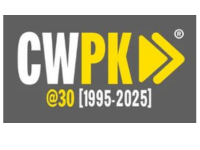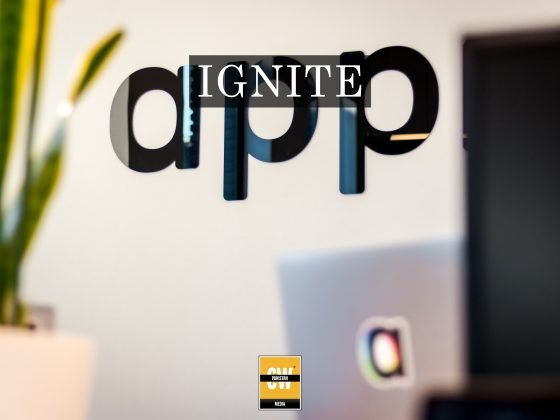The Pakistan Telecommunication Authority (PTA) has prepared a Licensing Framework for Terrestrial Internet of Things (IoT) Services, which focuses on the standards and norms for IoT service offering in unlicensed frequency bands.
The framework’s goal is to provide a regulatory framework for the industry to enable the development of the IoT/M2M eco-system, either through a list of unlicensed/shared bands that can be used for Low Power Wide Area Networks (LPWAN) on a non-interference and non-protection basis, or through exclusively licenced frequency bands, according to the PTA.
The Authority claimed that, in light of international trends and the government’s perspective, a legal framework defining conditions for the growth of the IoT ecosystem in licenced and unlicensed bands in the country was deemed necessary.
Radio frequency bands, such as cellular bands, internationally harmonised bands for Short Range Devices, and ISM bands, can be used to implement most IoT applications.
Each band has its unique use case, which is determined by its properties. As a result, the IoT licencing framework for service providing is classified primarily based on the frequency bands engaged in service provisioning, as follows:
- IoT services provided through exclusively assigned/licensed frequency bands;
- IoT services provided through shared frequency/un-licensed frequency bands, further categorized as:
- IoT services through Short Range Devices-Bands (SRD-bands) and/or Ultra-Wide Band (UWB)
- IoT Services under Class LPWAN License/Authorization.
According to the draught, cellular and other licensees may deliver IoT services using their individually licenced frequencies, subject to their respective licencing restrictions and/or any other conditions set by the Authority from time to time.
Mission Critical Services must also be provided via solely licenced frequency bands, subject to the terms and conditions of the licence or any other requirements imposed by the Authority.
It went on to say that the radio frequency spectrum designated for such use cases would be exempt from licencing as long as its operations adhered to authorised technical standards/limits set forth in the SRD framework.
The communication is primarily indoor and/or effective within a 100-meter outdoor range, and it is not directly connected to any public switched telecom network. Type Approval (TA) from Authority is an essential prerequisite for SRD use, according to current Type Approval Regulations.
According to the draught, the LPWAN licensee must provide IoT-specific connectivity in a certain area of service (AoS) using the frequency bands indicated, while adhering to the respective power limitations.
It will also use PTA licenced Local Access Providers to transfer backend traffic generated by the LPWAN network to the cloud/internet or to servers geographically remote from the LPWAN base station.
The licence will be valid for five years and will be renewed for additional terms as determined by federal regulation.
Exclusively assigned/already licenced frequency bands are subject to the terms and conditions of their respective licences, as well as any further terms and conditions imposed by the Authority from time to time.
Exclusive allocations for IoTs in any other frequency band will be handled on a case-by-case basis in the bands that the government will specify from time to time.
The shared/unlicensed frequency bands referred to in the SRD Framework for LPWAN shall be used on a secondary basis, i.e., networks operating in these bands shall not cause interference to other authorised primary radio communication services, and on a shared/non-exclusive basis, i.e., users of these networks shall not request any protection from interference caused by current or future primary radio communication services.
On the Authority’s direction, a user of an unlicensed frequency band must discontinue using it immediately if there is interference to primary services.
It also stated that the licensee shall not instal or connect any Terminal Equipment, or permit the installation or connection of any Terminal Equipment, unless the Terminal Equipment meets the following criteria:
- type-approved, or otherwise permitted by the Authority and,
- type-approved by a recognized telecommunication equipment type approval agency or a recognized telecommunication equipment testing laboratory in a member country of the Organization of Economic Cooperation and Development (OECD).
The licensee may not instal, connect, or permit the installation or connection of any Terminal Equipment or type of Terminal Equipment that the Authority prohibits. All equipment used to provide IoT services must adhere to the Authority’s Type Approval Regulations, which are updated on a regular basis.
The equipment (sensors, actuators, aggregators, appliances, and so on) utilised in the deployment of the LPWAN network must follow the ICNIRP criteria for reducing exposure to time-varying electric, magnetic, and electromagnetic fields.
The National Numbering Plan will be used to determine the numbering range. The “Number Allocation & Administration Regulations, 2018,” including any revisions or adjustments made by the Authority from time to time, shall apply. It is permissible to use appropriate IP addressing; nevertheless, migration to IPv6 is strongly urged.
Licensees who provide IoT services must save and maintain data for at least twelve months in order to provide it to the Authority as needed. The licensee shall notify the Authority of any data breaches (if any) within five working days of becoming aware of the breach.
source: ProPakistani









